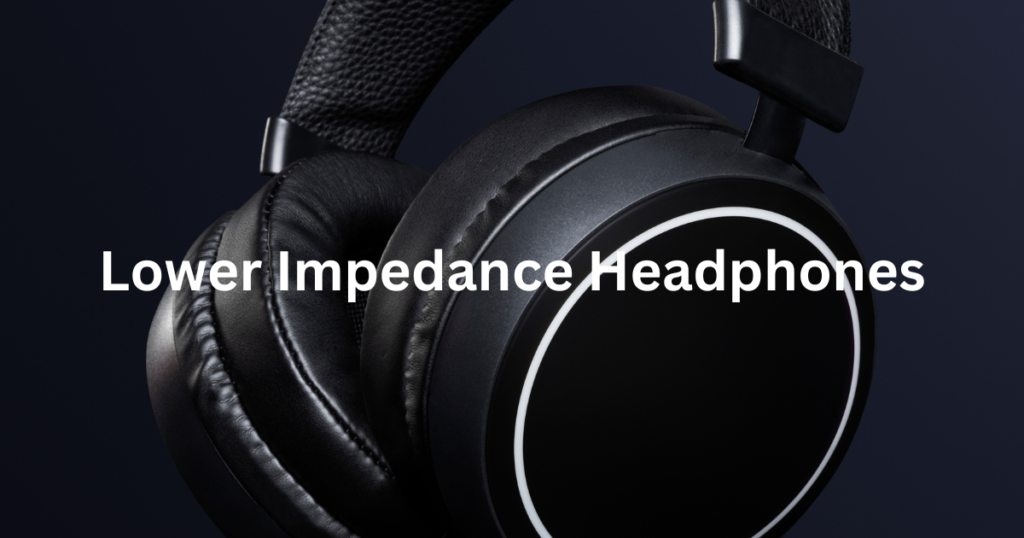What is ohm in headphones?
If you’re passionate about music and audiovisual media, then the odds are that understanding the science behind it is important to you. Where might you wonder, What is ohm in headphones?
One such concept within sound technology is ohms—the measurement of electrical impedance in audio transducers such as headphones or speakers.

Ohm isn’t just a confusing phenomenon for beginners; even experienced music lovers may not fully grasp what it means and why it matters when choosing headphones.
Well, don’t worry: in this blog post, we’ll dive deep into everything related to ohm in relation to headphone performance – from technical definitions to practical advice on how best to use them.
So if you want an authoritative guide on how and why ohms impact your listening experience—and, more importantly, how to get the most out of your favorite tunes with quality devices —you’ve come to the right place!
Higher Impedance Headphones
Headphones are measured by the ohm – symbolized as Ω – which serves as a unit of electrical resistance for determining impedance.
Higher impedances mean that more Ohms have to be present in order to navigate electricity, resulting in an even better audio experience through headphones with higher levels of accuracy and sound quality.
Higher-impedance headphones are worth considering if you’re looking for headphones that offer audiophile-level sound.
A higher impedance rating makes your headphones more resistant to interference while also providing a richer and more balanced sound than their lower impedance counterparts.
Not all audio devices can power high-impedance headphones, so make sure your device is compatible before making the purchase.
Additionally, they tend to be bulkier and require heavier cables to connect them to your device.
Still, if you’re serious about sound quality, there isn’t much better than a pair of higher-impedance headphones.
Lower Impedance Headphones
What is ohm in headphones? Here Lower-impedance headphones are the answer for those looking to elevate their listening experience.
With a lower impedance, they require less power to get to optimal volume levels – perfect for noise-canceling applications – and produce a more vibrant sound.

These headphones also have better sound reproduction due to their propensity for consistent and clear treble, bass, and mid-range tones across various frequency ranges.
Headphone models specifically designed for lower impedance applications can be found on the market today, making it easier than ever for music lovers everywhere to enjoy a crisp and powerful sound.
What is impedance?
Impedance is the resistance of a material to electrical energy. It measures the opposition that occurs when a current is sent through a conductor by combining its ohmic resistance and any present reactance.
Impedance can be thought of as similar to friction in that it opposes the flow of electrical energy. A wide range of materials may possess different impedance levels, making them more or less resistant to such energy flows.
While higher impedance values offer increased protection from unwanted currents, lower impedance materials can be advantageous for transmitting signals across long distances without significant signal loss.
Do more Ohms mean better sound?
Although more Ohms can lead to a louder sound, it may not result in a better sound. Increasing the Ohms affects different components of the audio system differently and subjectively, resulting in an altered complexity to the soundscape.
Furthermore, increasing the Ohms may reduce distortion by improving clarity but could also lead to a base loss.
When considering using higher Ohm speakers or amplifiers, it really depends on your preference as to whether more Ohms will provide improved sound quality.
Sound engineers typically suggest starting with lower-Ohm equipment and being mindful of the power output to ensure optimal sound quality.
Do high-impedance headphones sound better?
Although more Ohms can lead to a louder sound, it may not result in a better sound. Increasing the Ohms affects different components of the audio system differently and subjectively, resulting in an altered complexity to the soundscape.
Furthermore, increasing the Ohms may reduce distortion by improving clarity but could also lead to a base loss.
When considering using higher Ohm speakers or amplifiers, it depends on your preference whether more Ohms will provide improved sound quality.
Sound engineers typically suggest starting with lower-Ohm equipment and being mindful of the power output to ensure optimal sound quality.
Why do headphones have different impedance?
Headphones have different impedances because they are designed to produce a broad range of listening experiences.
A low-impedance set of headphones functions best when connected directly to an audio source, allowing the full power of a device’s output to drive them.
High-impedance headphones are usually recommended for use with amps and other high-power outputs, as the increased impedance means that more overall power needs to be generated to achieve optimal sound.
When used properly, differing impedance levels can create big differences in sound quality, creating a more customized experience for any listener.
Do high-impedance headphones need an amp?
Have you ever wondered if high-impedance headphones need an amplifier? The answer depends on several factors, such as the type of output device you are using and the power specs of your headphones.

Generally, high-impedance headphones require more power to reach a satisfactory volume level. An amplifier is designed to provide that additional power, allowing you to enjoy listening at higher levels and experiencing better sound overall.
It can also reduce distortion in more complex sound recordings, so if you’re a passionate audiophile, investing in an amp may be worth it.
Ultimately, though, the decision to pair your headphones with an amplifier comes down to personal preference – some people swear by them, while others have never felt the need.
What is a good amount of Ohms for headphones?
Finding the right Ohm rating for your headphones is all about balancing sound quality and power. A higher Ohm count will give you better sound clarity but require more power to get the maximum volume.
So, while a lower Ohm recommendation may provide plenty of power (between 16-32 Ohms), if you’re using an external amplifier, then opting for a 50 or 80 Ohm device will give you better sound distortion-free need to turn up the volume to a hurting level.
If you don’t want to be bounded by wires when listening music, then a low 16 – 32 cellphone-compatible pair of headphones is suggested as it won’t require much power drawn from your phone’s battery.
Earbuds and headphones for making calls and casually listening to music: 16 Ω
16 Ω earbuds and headphones are ideal for making and taking calls on the go and casually listening to your favorite tunes.
These devices provide great sound quality by offering a wide range of frequencies. They also offer up to 16 hours of battery life with Bluetooth enabled, so you can stay connected without having to worry about finding a wall outlet!
Additionally, they’re designed to be comfortable and secure; once fitted properly, they’ll stay in place while running or participating in other activities.
With so much going for it, it’s no wonder that more people are opting for 16 Ω earbuds and headphones these days!
Headphones for playing video games and listening to music at home: 32 Ω
With the right headphones, gamers and music lovers alike can take their experience to a new level, pushing boundaries further and further.
With 32 Ω headphones designed for playing video games and listening to music at home, you will immediately notice a difference in sound quality.
Expect crystal-clear acoustic accuracy with impressive bass response giving you the edginess you need for gaming and the full range of flavorsome notes that only high-quality audio can provide.
Investing in 32 Ω headphones is an excellent way to bring your home experience to life: immerse yourself in exciting virtual adventures or experience your favorite songs like never before.
Headphones for serious audiophiles, beatmakers, DJs, and musicians: 80 Ω
If you’re a serious audiophile, beat-maker, DJ or musician on the search for next-level headphones, then you need to check out those with an impedance rating of 80 Ω.
With an impedance rating that high, it’s easy to see why these headphones would be great for anyone who works in sound production or spend a lot of time loving every last drop of aural pleasure from their music.
Top-notch quality and power are what make these headphones ideal for audiophiles and pros alike. They’ll have booming bass and dynamic range that lets you dive into your favorite songs like never before.
Whether you’re mixing tunes in the DJ booth or just enjoying your music library at home, 80Ω headphones are up to the job!
Experienced music pros, audio engineers, and top-level musicians: 250 Ω
If you’re a professional musician, audio engineer, or someone looking to achieve top-level sound quality, Olympus’s 250 Ω is the perfect choice for helping you up your game.
With an oxygen-free copper core and specially designed HDA connectors, this headphone set will deliver exceptional clarity without compromising the pureness of sound that it generates.
It’s no wonder that 250 Ω headphones have become so popular among music professionals; they provide clear and accurate sound without having to worry about any sonic distortions.
With its full dynamic range performance and extraordinary voicing capabilities, it is the perfect way for seasoned pros and aspiring working musicians alike to listen in on their work with unbeatable accuracy and attention to detail.
Related FAQ’s
Are higher ohms better for headphones?
When it comes to headphones and sound quality, many people often ask the question: Are higher ohms better? The short answer is yes– generally speaking, higher ohm headphones provide a much richer sound experience.
Let’s start by looking at what an Ohm (Ω) actually means in terms of headphone use. Essentially, Ohms measure how easily electricity can flow through your headset.

Generally speaking – the lower the number of Ohms in a pair of headphones, the easier it will be for your audio device to send power to them.
This usually results in louder volume but at a cost – lower impedance (or low-Ohm) headphones have less overall sound accuracy and clarity when compared to their counterparts with higher impedance levels.
High-Ohm headsets require more power than low-Ohm ones before they reach maximum volume level; this often leads to audible distortions or static sounds on low-powered audio sources like smartphones or computers.
That said, this doesn’t necessarily mean that high-Ohm headphones are always better than low impedance models – some listeners may prefer one option over another due to personal preference or music genre taste, so it’s ultimately up to you what type of headset you choose!
In addition, there’s also other factors that come into play when choosing between different types of headphone models aside from just their Ohms rating – such as design characteristics like comfort level and portability considerations too! Be sure not overlook these equally important factors when looking for your perfect pair!
Overall though – if all else is equal between two options – then almost certainly a set with higher Ohms will offer better sound quality thanks its ability to handle more power before distorting and thus providing users with greater sonic fidelity.
Is 80 ohm better than 250-ohm?
This really depends on what you’re trying to accomplish and which audio needs you’re trying to meet. While neither is necessarily better than the other, they each have features that may make one more suitable for your project.
Let’s start with 80-ohm headphones. These are good for listening to amplified music and also work well with a variety of amplifiers that can drive them strongly.
They tend to produce a louder sound than their 250-ohm counterparts and can provide an immersive audio experience when coupled with extra bass boost or surround sound effects available in some systems.
With powerful amplification, they won’t distort when pushed too hard, so longer listening sessions without fatigue will be possible due to their lower impedance level.
Now let’s explore 250 ohms headphones – these usually offer cleaner highs and mid-tones as well as great response at both low and high frequencies due to higher impedance rating; additionally, they provide superior sensitivity without requiring powerful amplifiers since the inherent output of these drivers is greater than standard headphone drivers which require extra power from an amplifier to reach maximum volume levels in order not to introduce distortion into the signal path.
With a relatively flat frequency response curve throughout most of its range, these headphones excel at accurately reproducing complex sounds such as acoustic guitar strums or vocal harmonies – making them excellent choices for critical monitoring applications such as mastering or mixing in studios!
In conclusion – it all comes down to personal preference based on your exact requirements: if you’re looking for loudness, then get yourself some 80 ohms; but if accuracy and clarity are more important criteria, then go ahead with 250s – whichever suits your application best!
Is high or low ohms better?
When it comes to making the most of your audio system, the question of high or low ohms is one that comes up a lot. Ultimately, it depends on what kind of sound you’re trying to achieve and how much power your setup can handle.
Generally speaking, lower ohms systems provide more output (louder sound) than higher ones. The tradeoff is that in a very low ohm setup – typically 4 ohms or less – there’s less headroom before clipping occurs due to increased current draw at the same input voltage.
This means that more powerful amplifiers are needed for very low impedance setups because they will generate higher voltages while still remaining stable with loads as low as 2 ohms or even 1 ohm!
On the other hand, if your goal is clear and accurate sound production rather than extreme amounts of power, then higher impedance systems might be preferable since they usually have a flatter frequency response curve with fewer distortions at lower volumes than their ultra-low impedance counterparts.
Of course, this all depends on speaker design as well – some speakers may perform better when paired with an amplifier designed for 4-ohm loads vs 8 or 16-ohm ones!
Ultimately, choosing between high and low-impedance systems really comes down to personal preference. Make sure you know exactly what kind of setup you want out of your audio system so that you can pick components accordingly!
Is 32 ohm or 250-ohm better?
It really depends on what you’re looking for. 32-ohm headphones are usually cheaper and provide more bass sounds, making them great for people who like to listen to hip-hop, electronic music, or metal, as they will provide a “punchier” sound with greater bass output.
However, if you’re looking for a more nuanced sound with better clarity and detail in the mids and treble frequencies, 250-ohm headphones might be better.
Generally speaking, though, if you’re buying studio-grade headphones, it’s recommended that you go for 250 ohms as these will often be well-matched with professional audio equipment so that your speakers don’t distort at higher volumes due to impedance mismatch relative to the source powering them.
Additionally, this gives plenty of headroom in terms of volume control which is important when mixing music or editing audio files where subtle changes can make huge differences.
In general, it comes down to your preferences – but typically, 32-ohm headsets are best suited towards consumers, while 250-ohm designs should be chosen by professionals seeking optimal performance from their gear.
Summary
It’s no wonder that headphone companies use “ohm” to market their products. Low-ohm headphones can produce a wider range of frequencies, resulting in better sound quality.
Higher ohm headphones may not have as wide frequency response, but they don’t require as much power to operate, making them ideal for battery-powered devices.
When shopping for headphones, remember the type of music you listen to and how you like to experience it. If you want the best possible sound quality, go for low-ohm headphones.
But if you need something more portable or easier on your wallet, higher-ohm headphones might be the way to go.



